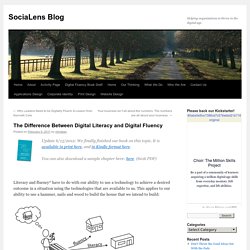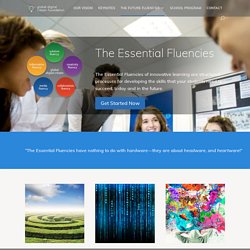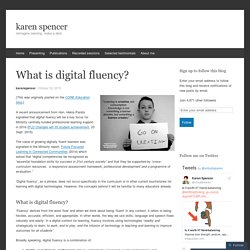

Digital Fluency for Alignment. Changes in culture and technology tend to break things in organizations that were previously working just fine.

In our research and client work so far, we’ve seen a few different types of breakdowns related to the increasing pervasiveness of digital technologies. All of them have to do with mis-alignment between three key things, pictured in the diagram below, and all of them can be helped by increasing an organization’s digital fluency: Before we go further, a note to those of you who are astutely thinking to yourself: “Isn’t the overall desired outcome for an organization the same today as it was before the rise of digital technologies?”
From my perspective, the answer is both yes and no. First the “yes” part: Organizations have always worked toward the outcome of maintaining a healthy, profitable relationship with their customers, suppliers, partners and the public, so nothing has really changed there. And now for the “no” part. Let’s start with an obvious example of good alignment. The Difference Between Digital Literacy and Digital Fluency. Update 6/13/2012: We finally finished our book on this topic.

It is available in print here, and in Kindle format here. You can also download a sample chapter here: here (601k PDF) Literacy and fluency* have to do with our ability to use a technology to achieve a desired outcome in a situation using the technologies that are available to us. This applies to our ability to use a hammer, nails and wood to build the house that we intend to build: ..and it applies to our ability to use digital technologies to have the intended positive effect on people and situations: Note that a literate person is perfectly capable of using the tools.
*For the sake of simplicity, we have boiled all of this down to three levels of skill, and have given them what we think are easy-to-understand names. Related Posts: Skilled, LIterate & Fluent in the Digital World I have been intrigued with the relationship of being skilled, literate and fluent in the Digital World for a while.

We are focusing at school to look through the lens of fluency using technology as tools (e.g. using the iPad as the device and apps as the tool to achieve fluency), not as the end. I am wondering if the word “fluency” in the digital world, sparks the same thoughts or activates the background definition in other educators? I have heard others in the edubloggersphere use the word “workflow” instead of “fluency”. Workflow is defined by Wikipedia as: The sequence of industrial, administrative, or other processes through which a piece of work passes from initiation to completion. The word “workflow” c-o-u-l-d work, but still does not sound right. Fluency- workflow? Looking back at my train of thought, I started by looking at the flow between the skills needed to become literate in order to move on to become fluent. Like this: Like Loading... Amazon. The Keyword Blog: Information Fluency Interactive Infographic.
Information Fluency. Global Digital Citizen Foundation. The Essential Fluencies The Essential Fluencies of innovative learning are structured processes for developing the skills that your students need to succeed, today and in the future.

Get Started Now “The Essential Fluencies have nothing to do with hardware—they are about headware, and heartware!” Solution Fluency Develop problem-solving superpowers Learn More Information Fluency Learn Sherlock-style data skills Learn More Creativity Fluency Unleash your inner Picasso Learn More Media Fluency Be the next Spielberg Learn More Collaboration Fluency Bring together unstoppable teams Learn More Global Digital Citizenship Be global, and be great Learn More. Ictreport. What is digital fluency? [This was originally posted on the CORE Education blog.]

A recent announcement from Hon. Hekia Parata signalled that digital fluency will be a key focus for Ministry centrally-funded professional learning support in 2016 (PLD Changes will lift student achievement, 23 Sept. 2015). The value of growing digitally fluent learners was signalled in the Ministry report, Future Focused Learning in Connected Communities (2014) which asked that “digital competencies be recognised as “essential foundation skills for success in 21st century society” and that they be supported by “cross-curriculum resources, a responsive assessment framework, professional development and a programme of evaluation.” ‘Digital fluency’, as a phrase, does not occur specifically in the curriculum or in other current touchstones for learning with digital technologies. However, the concepts behind it will be familiar to many educators already.